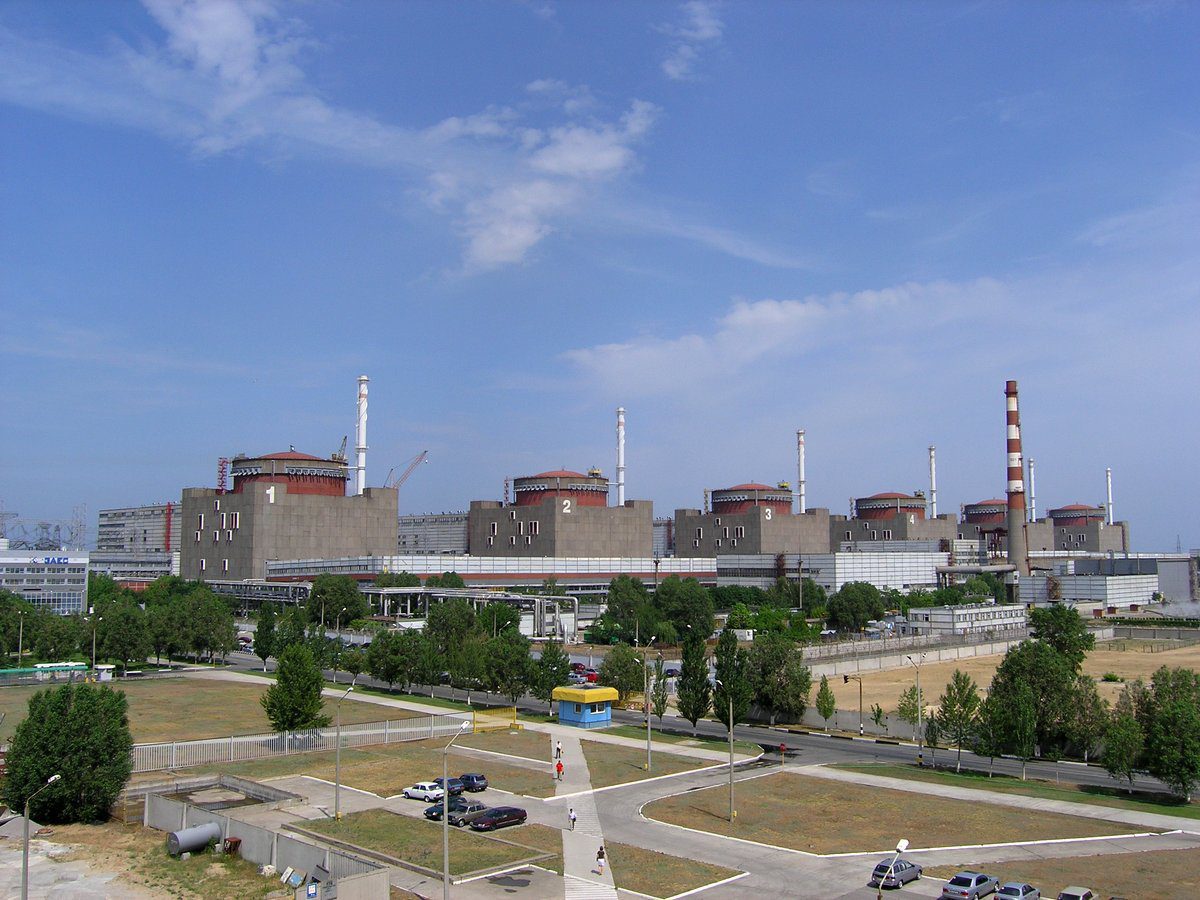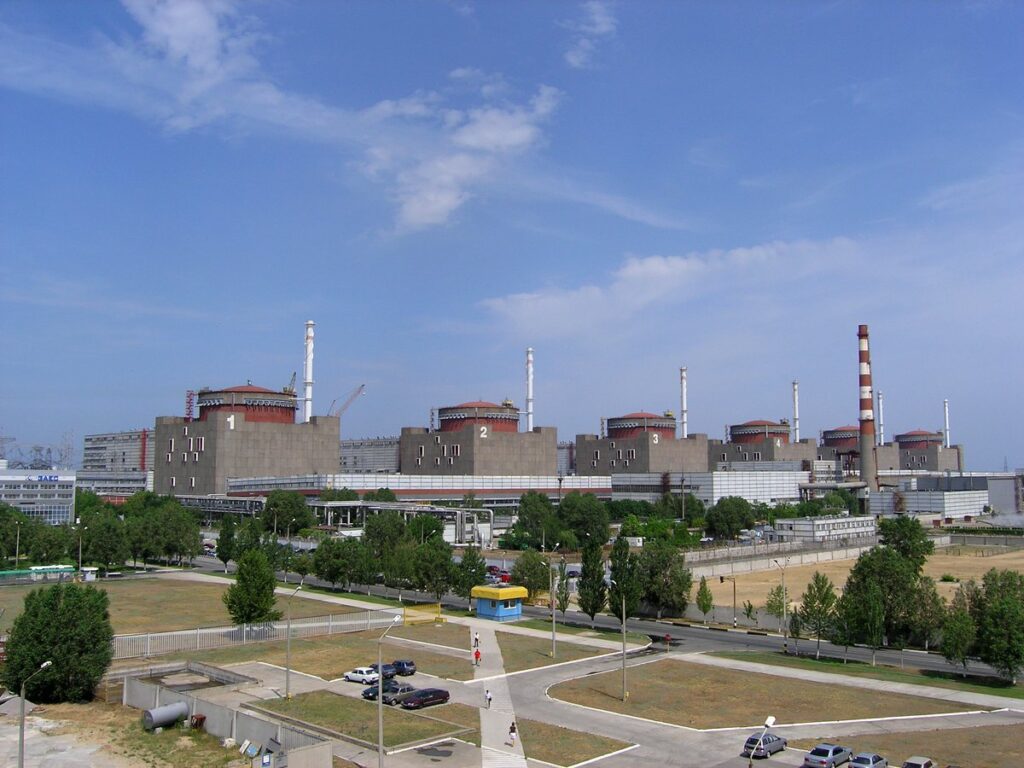
The International Atomic Energy Agency (IAEA) is growing increasingly alarmed by military action at Ukraine’s Zaporizhzhya nuclear plant, warning that artillery shelling at the plant site on Aug. 5 underlines a “very real risk of a nuclear disaster.”
IAEA Director General Rafael Mariano Grossi in a statement on Aug. 6 said new information about the Russian-Ukraine conflict at the site poses a “serious situation.” The information suggests that while there has been no damage to the 6-GW Zaporizhzhya nuclear plant’s six reactors and no radiological release, “there is damage elsewhere on the site,” he said.
Military action at Zaporizhzhya—Europe’s largest nuclear power plant—has ramped up in recent days. Russia occupied the plant, which is located in the southern part of Ukraine, in March—relatively early in its occupation of Ukraine. The nuclear plant continues to be operated by Energoatom, Ukraine’s state-owned entity. All 15 of Ukraine’s nuclear reactors are pressurized water reactors of Russian VVER design and are located at four plant sites. Zaporizhzhya, Ukraine’s largest plant with six reactors, is also the plant that is closest to the Russian-occupied regions of Crimea and eastern Ukraine.

Damage at Plant Site
Energoatom on Friday issued an urgent statement claiming that Russia had fired on the nuclear plant two times. The first round involved artillery shelling at about 2:30 p.m., and the second round, which occurred on Friday evening, involved “rocket-propelled grenades.” The attacks damaged switchgear of a 330-kV high-voltage transmission line, triggering emergency power and prompting the shutdown of one reactor. A nitrogen-oxygen station and an auxiliary building was also damaged, Energoatom said. “There are risks of hydrogen leakage and sputtering of radioactive substances. Fire danger is high. Currently, there are no victims,” it said. At least one of the plant’s six reactors is reportedly still operational.
The plant operator claimed that before the shelling, Rosatom representatives “hurriedly” left the station. The nuclear plant’s Ukrainian staff remains on site, continuing to perform “all measures to ensure nuclear and radiation safety and [eliminate] the consequences of damage,” it said.
Energoatom in another statement on Saturday claimed the Russian attacks were targeted at “destroying the station’s infrastructure, and damaging all power lines through which electricity is supplied to the Ukrainian power system, and cutting off power in the south of the country.”
Russia’s defense ministry has denied the strikes. “Ukrainian armed units carried out three artillery strikes on the territory of the Zaporizhzhia nuclear power plant and the city of Enerhodar,” it said in a statement that was widely reported on Friday.
Grossi: ‘A Highly Volatile and Dangerous Situation’
On Saturday, Grossi underscored risks posed by the highly volatile and dangerous situation. “Military action jeopardizing the safety and security of the Zaporizhzhya nuclear power plant is completely unacceptable and must be avoided at all costs,” he said. “Any military firepower directed at or from the facility would amount to playing with fire, with potentially catastrophic consequences. I strongly and urgently appeal to all parties to exercise the utmost restraint in the vicinity of this important nuclear facility, with its six reactors.”
Grossi also urged Russia and Ukraine to heed the seven “indispensable safety pillars,” which the IAEA outlined when Russia occupied Ukraine in February. The “pillars” require that Ukraine’s nuclear plant integrity be maintained and that all safety and security systems and equipment remain fully functional at all times.
Another integral pillar is to keep plant staff safe, Grossi said. “The Ukrainian staff operating the plant under Russian occupation must be able to carry out their important duties without threats or pressure undermining not only their own safety but also that of the facility itself,” he underscored on Saturday. “I condemn any violent acts carried out at or near the Zaporizhzhya nuclear power plant or against its staff.”
Grossi also urged Russia and Ukraine to facilitate a mission by the IAEA that would allow agency safeguards inspectors to conduct essential verification activities at the plant. The agency would also provide “impartial and independent information about the status of the Zaporizhzhya facility,” he said.
“That this vital mission has not yet happened is not because of the IAEA. Despite our determined efforts, it has not been possible, so far,” Grossi said. “I will not give up. I will continue to push—and push again—for this IAEA mission to finally take place,” he said. “We can’t afford to lose any more time.”
—Sonal Patel is a POWER senior associate editor (@sonalcpatel, @POWERmagazine).
The post IAEA: Shelling at Zaporizhzhya Nuclear Plant Raises ‘Real Risk’ of Nuclear Disaster appeared first on POWER Magazine.